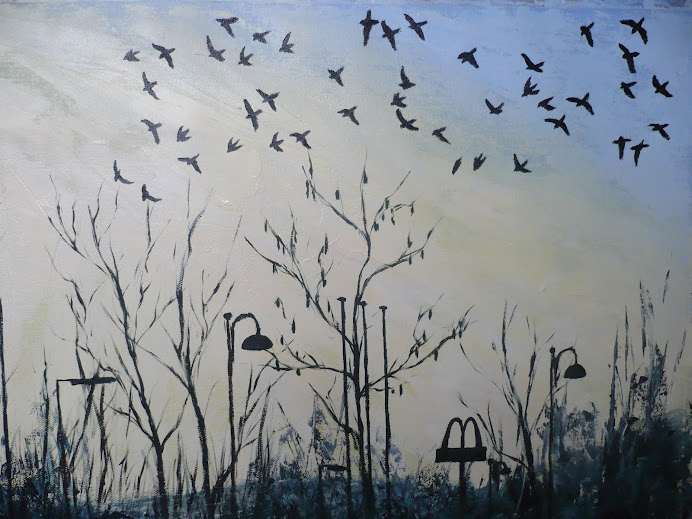
Uriel, 1955, by Franz Kline and Zinc Door, 1961, by Barnett Newman at the Kunsthalle, Hamburg, Germany. Photo courtesy of Bridgeman Education.
Reading the book Abstract Art by Mel Gooding I became interested in the work of Barnett Newman, which seemed to have such an immense scale and an interesting use of splitting the canvas up unto smaller strips, which were called "zips." Seeing them in a book is very different to seeing the real thing, and this photo form the Bridgeman site gives a good idea of the scale of the painting. It's dimensions are 243.8 by 548.6cm which is impossible to visualise from the close up photo of it which is also on the Bridgeman site.

Uriel By Barnett Newman, photo courtesy of the Bridgeman Site.
However this detailed photo does give more information about the colour and construction of the painting, again showing zips on the side, though instead of the standard one zip in most of his other paintings, this time there are five; two black, town white and one blue.
This painting stood out for me as an abstracted view of the ocean and shoreline, even seen with the lines vertical it seems to shine with light and water. Viewed on its side, so the stripes are horizontal, creates an even more convincing illusion of the sea. This also fed into my interpretation of a Minimalist Seascape.







